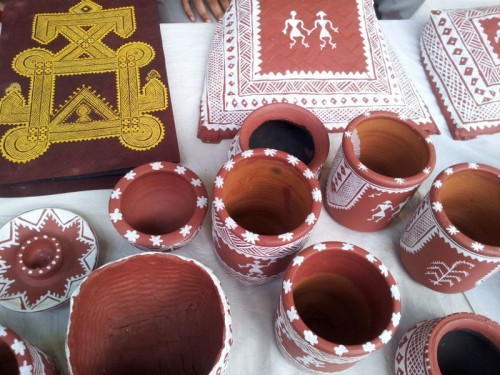Elegant black stone pottery from Manipur. Karnataka’s intriguing Chittara paintings. The intricate weaves and stitches of Kashmir. These were some of the items on display and sale at the annual Craft Mela (fair) hosted by Kala Madhyam, a Bangalore based non-governmental organization (NGO) that promotes traditional artisans and their work. This colourful fiesta was held at Karnataka Chitrakala Parishath, a reputed art and craft institution in the city.
It is a well known fact that human diversity is inherent in India apart from the differences in geography, ecology, flora, fauna et al. Our social and cultural variety is not only visible in the multiple languages spoken, the many faiths that are practised but also in the innumerable arts and crafts of the country. Artisans in each state or region of this vast land have been linked with their unique traditional paintings, sculpture, pottery, weaving, embroidery or printing. They have been producing these works from one or more materials like metal, wood, clay, bamboo, stone or thread for generations. It is important to note that the handiwork is often their only source of livelihood. Although the work does not fetch enough returns and the government does not support most of them through subsidies or incentives, they continue to practice their craft. This is because the knowledge is passed on to them through their family elders and they have been on the job from a young age. Further, they do not possess other skills. Of course, in some instances, the current young generation is seeking other opportunities and avenues for employment while assisting their families in the craft.
A look at some of the people and their lovely work:

If you found our stories insightful, informative, or even just enjoyable, we invite you to consider making a voluntary payment to support the work we do at The Better India. Your contribution helps us continue producing quality content that educates, inspires, and drives positive change.
Choose one of the payment options below for your contribution-
By paying for the stories you value, you directly contribute to sustaining our efforts focused on making a difference in the world. Together, let's ensure that impactful stories continue to be told and shared, enriching lives and communities alike.
Thank you for your support. Here are some frequently asked questions you might find helpful to know why you are contributing?

